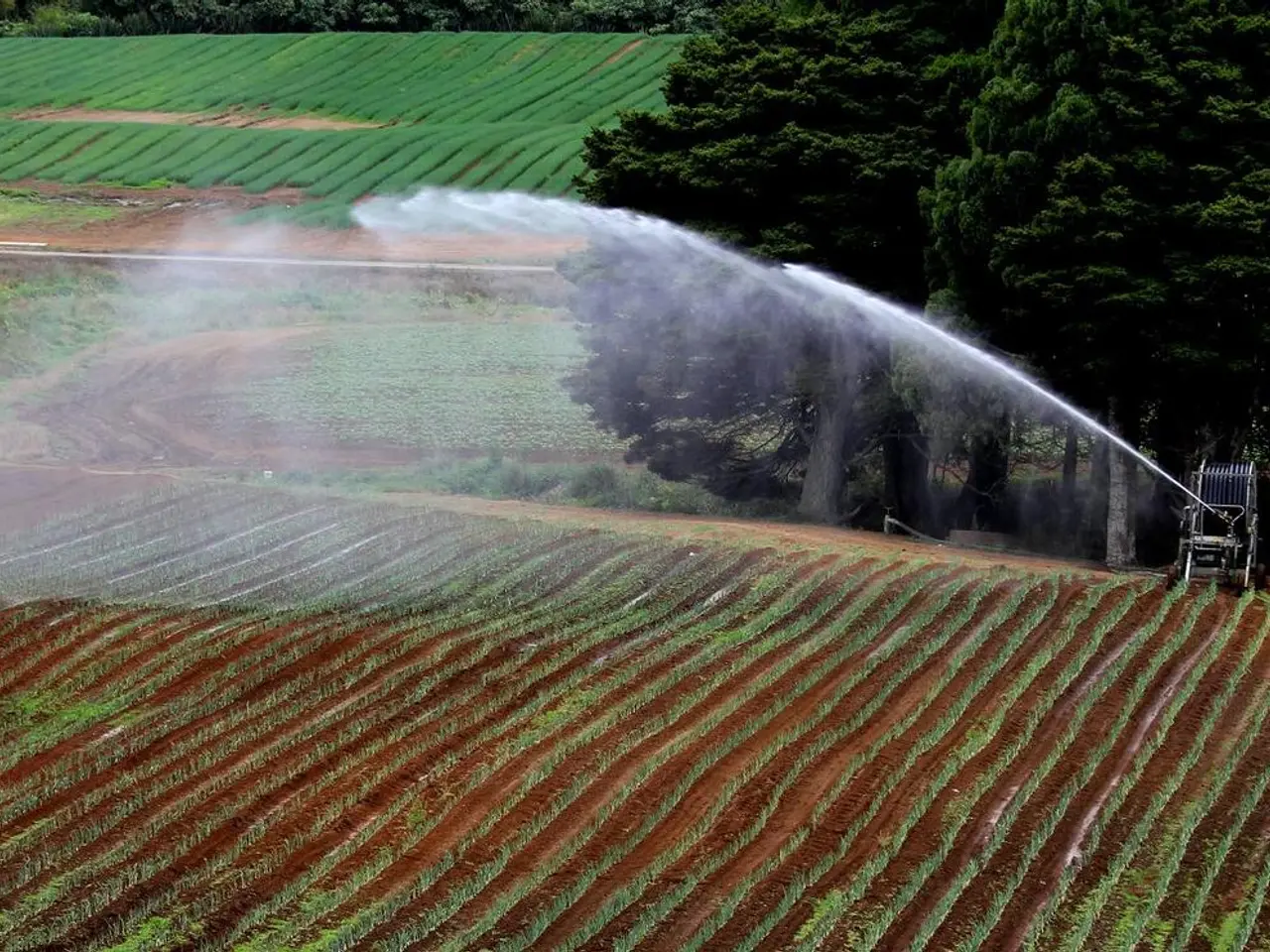Maintaining irrigation systems: strategies to prevent failures
In the quest for a lush, green lawn and healthy plants, an efficient irrigation system plays a crucial role. Regular maintenance is key to ensuring the system functions optimally, conserves water, and prolongs its lifespan. Here are some essential steps to follow in maintaining your irrigation system.
Firstly, inspect your system regularly for leaks, damage, and underground issues. Look out for cracked pipes, broken heads, leaking valves, soft or soggy spots, or unusually green areas of the lawn. Early detection can help avoid water waste and costly repairs.
Secondly, clean your sprinkler heads and filters regularly, particularly every 4-6 weeks during heavy use periods. This helps maintain proper water flow and prevents clogging that strains the system.
Thirdly, adjust sprinkler heads and spray patterns monthly to account for plant growth, shifts in heads, and changing weather conditions. This ensures even water coverage and avoids watering hardscapes.
Fourthly, monitor and regulate water pressure weekly. Maintain it between 30-50 PSI; pressure that is too high damages components, while pressure that is too low results in poor coverage.
Fifthly, test and adjust watering schedules seasonally. More frequent or longer watering during hot summer months and gradually reducing watering during cooler months helps prevent overwatering and water waste. Timers should water in early morning or evening when evaporation is low.
Sixthly, flush the irrigation system regularly, especially if running many pumping hours. This removes debris and prevents blockages that can damage equipment and reduce soil and water health. Flushing is crucial during both the active season and off-seasons.
For smart sprinkler systems, regularly update software, test and calibrate weather sensors, adjust watering schedules according to seasonal changes, secure Wi-Fi connections, and winterize before freezing temperatures.
A typical routine maintenance schedule could include:
- Weekly: Check pressure, inspect for leaks or damage.
- Monthly: Adjust spray patterns, clean filters.
- Seasonally (spring/fall): Test and adjust watering schedule, flush systems, inspect and replace damaged parts.
- Before winter: Winterize system (blow out lines), shut off water supply.
- Ongoing: Monitor system performance and make adjustments as needed.
Installing rain sensors can optimize water consumption and prevent unnecessary watering. Leaks, obstructions, or faulty solenoids can cause damage to the entire irrigation system if not detected in time. In winter or rural areas, pipes can be damaged by ice or animals, requiring a complete inspection at the start of the season.
By following this structured maintenance routine, you can avoid costly breakdowns, conserve water, support plant health, and prolong your irrigation system's life.
Maintaining a home-and-garden lifestyle, particularly in home-improvement projects for your lawn and plants, involves regular inspection of your irrigation system to identify potential issues such as leaks, damage, or soft spots (leaks, damage, and underground issues). Also, updating the software for smart sprinkler systems is essential to optimize water consumption and ensure accurate weather sensor calibration.






